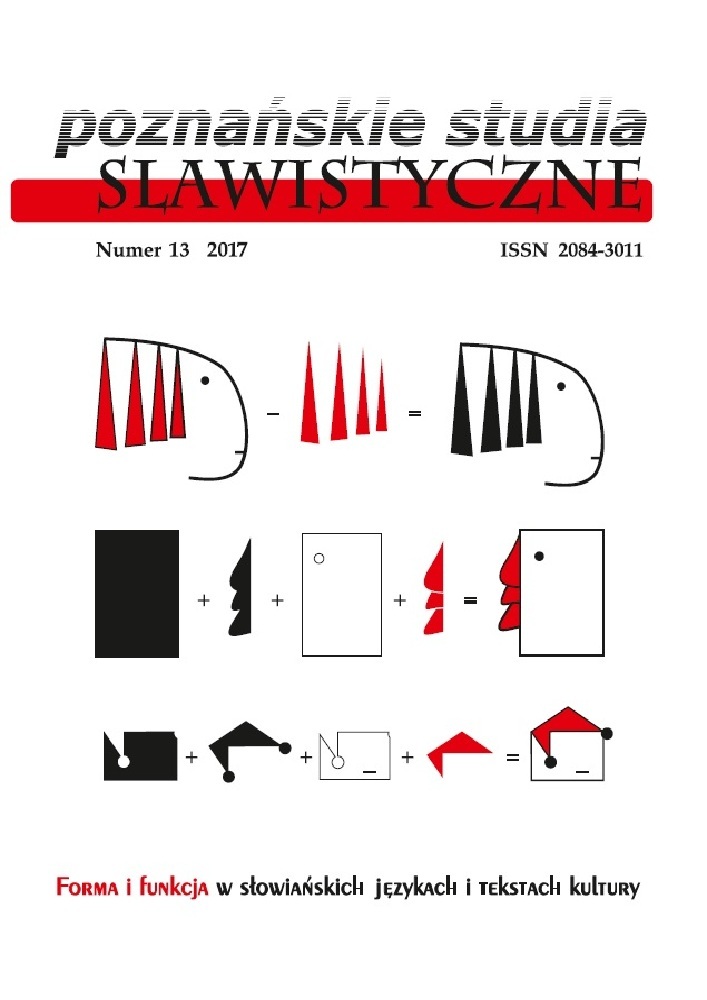Abstrakt
Works by Belgrade artist Leonid Šejka (1932–1970) are usually considered fantastic, an embodiment of aesthetic ideals of Mediala Art Group he was a member of, an opposition to everything that Modernism stood for with its harsh formalism that expelled object. However, the complexity of Šejka’s opus as artist and theorist allows a different approach. In this paper, we turn to – so far neglected – Šejka‘s positive relation to Modernism, which he saw as a foundation for new aesthetic ideals. He understood that Modernism turned paintings into objects of empty forms void of function. Nevertheless, the future of painting, for him, resided in re-introduction of objects into painting in order to re-establish the necessary form-function relation, preserving, at the same time, Modernist traits. Šejka tried to demonstrate this in his mature works. He wrote about it in a series of writings, which contribute to our understanding of his opus.Bibliografia
Denegri, J. (1967). Elementi za određenje pojave nove predmetnosti u mladom beogradskom slikarstvu. „Umetnost”, br. 9, str. 47–60.
Denegri, J. (1993). Pedesete: teme srpske umetnosti. Novi Sad: Svetovi.
Denegri, J. (1995). Šezdesete: teme srpske umetnosti. Novi Sad: Svetovi.
Đorić, D. (2007). Leonid Šejka [1932–1970] apokaliptičar i integrator. Beograd: Službeni glasnik.
Greenberg, C. (1939). Avant-Garde and Kitsch. „Partisan Review”, br. 6, str. 34–49.
Greenberg, C. (1965). Modernist Painting. „Art & Literature”, br. 4, str. 193–201.
Harison, Č. (2004). Modernizam. U: Kritički termini istorije umetnosti. Ur. R.S. Nelson, R. Šif. Novi Sad: Svetovi, str. 243–259.
Harrison, C., Wood, P. (ur.) (1992). Art in Theory 1900–1990. An Anthology of Changing Ideas. Oxford: Blaskwell Publishing.
Huyssen, A. (1986). After the Great Divide. Modernism, Mass Culture, Postmodernism. Indianapolis: Indiana University Press.
https://doi.org/10.1007/978-1-349-18995-3
Kapoor, G.A. (1980). Realism and Modernism: A Polemic for Present-Day Art. „Social Scientist”, br. 5/6, str. 91–100.
Kukić, B. (1983). Mistična deoba. „Gradac”, br. 51–52, str. 93–95.
Kukić, B. (1992). Haoskosmogonija Leonida Šejke. „Istočnik”, br. 2, str. 34–44.
Marković, S. (1993). Leonid Šejka i Mediala. Niš: Prosveta.
Merenik, L. (2010). Umetnost i vlast. Srpsko slikarstvo 1945–1968. Beograd: Vujičić kolekcija.
Mijušković, S. (ur.). (1980). Kazimir Malevič: suprematizam, bespredmetnost. Tekstovi, dokumenti, tumačenja. Beograd: Studentski izdavački centar UK SSO Beograda.
Mijušković, S. (1998). Od samodovoljnosti do smrti slikarstva. Beograd: Geopoetika.
Milosavljević-Ault, A. (2014). Skladište. Smisao i funkcija skladišta u umetničkom sistemu Leonida Šejke. Beograd: PUNKT.
Pavlović, Z. (1969). Mediala ili sudbina jednog mita. „Književnost”, br. 3, str. 301–304.
Protić, M. (1972). Leonid Šejka: Parabola o integralnom. Katalog Retrospektivne izložbe 1932–1970. Beograd: Muzej savremene umetnosti, str. 3–14.
Protić, M. (1980). Jugoslovensko slikarstvo šeste decenije – nove pojave. Katalog izložbe Jugoslovensko slikarstvo šeste decenije. Beograd: Muzej savremene umetnosti, str. 9–16.
Protić, M. (1981). Ideje srpske umetničke kritike i teorije: 1900–1950, vol. 3. Beograd: Muzej savremene umetnosti.
Radojčić, M. (1981). Teorija Mediale u kontekstu odnosa savremene umetnosti prema tradiciji. U: Mediala, katalog izložbe. Umetnički paviljon Cvijeta Zuzorić. Ur. M. Radojčić, D. Kalajić, M. Glavurtić, S. Bošnjak. Beograd.
Subotić, I. (1972). Leonid Šejka: Podaci o ličnosti i delu. Katalog Retrospektivne izložbe 1932–1970. Beograd: Muzej savremene umetnosti, str. 15–45.
Šejka, L. (1982a). Grad-Đubrište-Zamak 1. Ur. B. Kukić. Beograd: Književne novine.
Šejka, L. (1982b). Grad-Đubrište-Zamak 2. Ur. B. Kukić. Beograd: Književne novine.
Licencja

Utwór dostępny jest na licencji Creative Commons Uznanie autorstwa – Bez utworów zależnych 4.0 Międzynarodowe.
